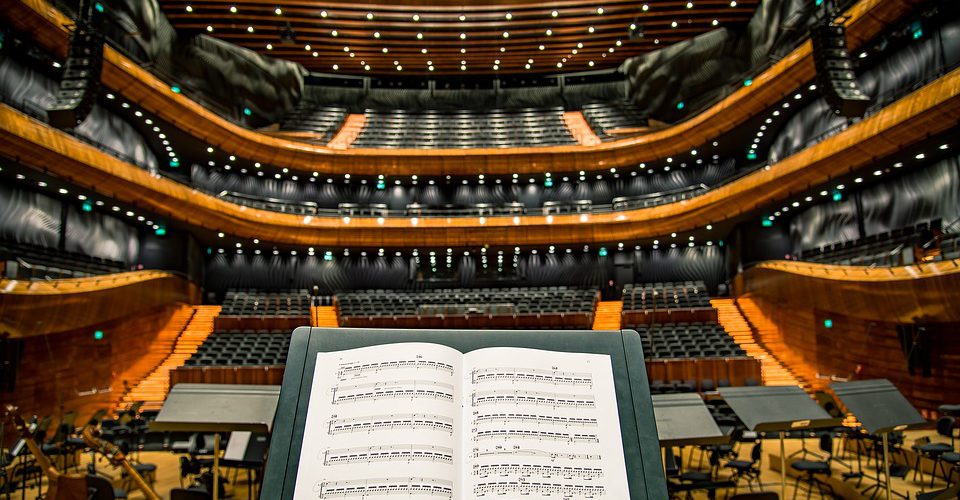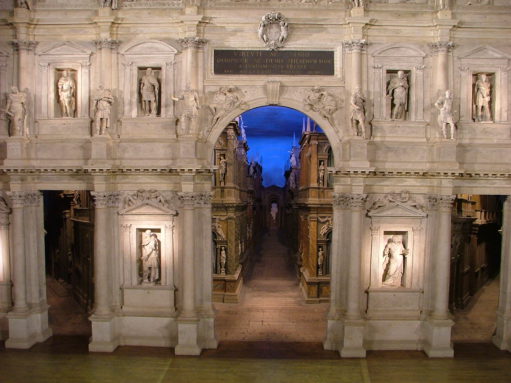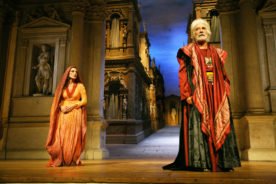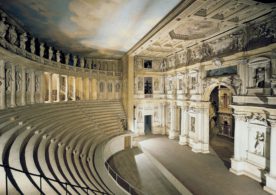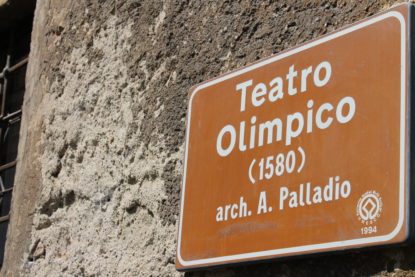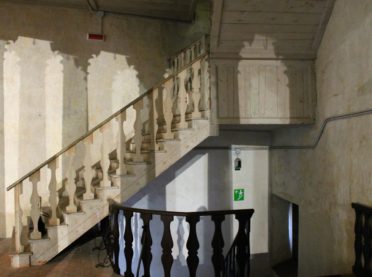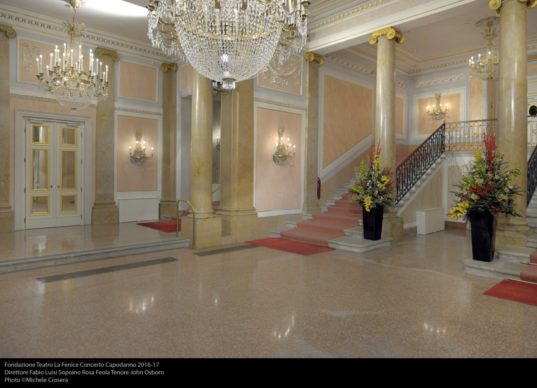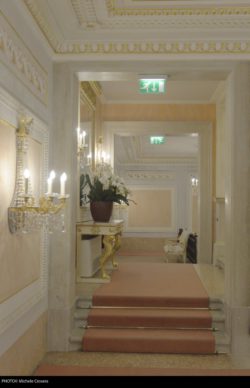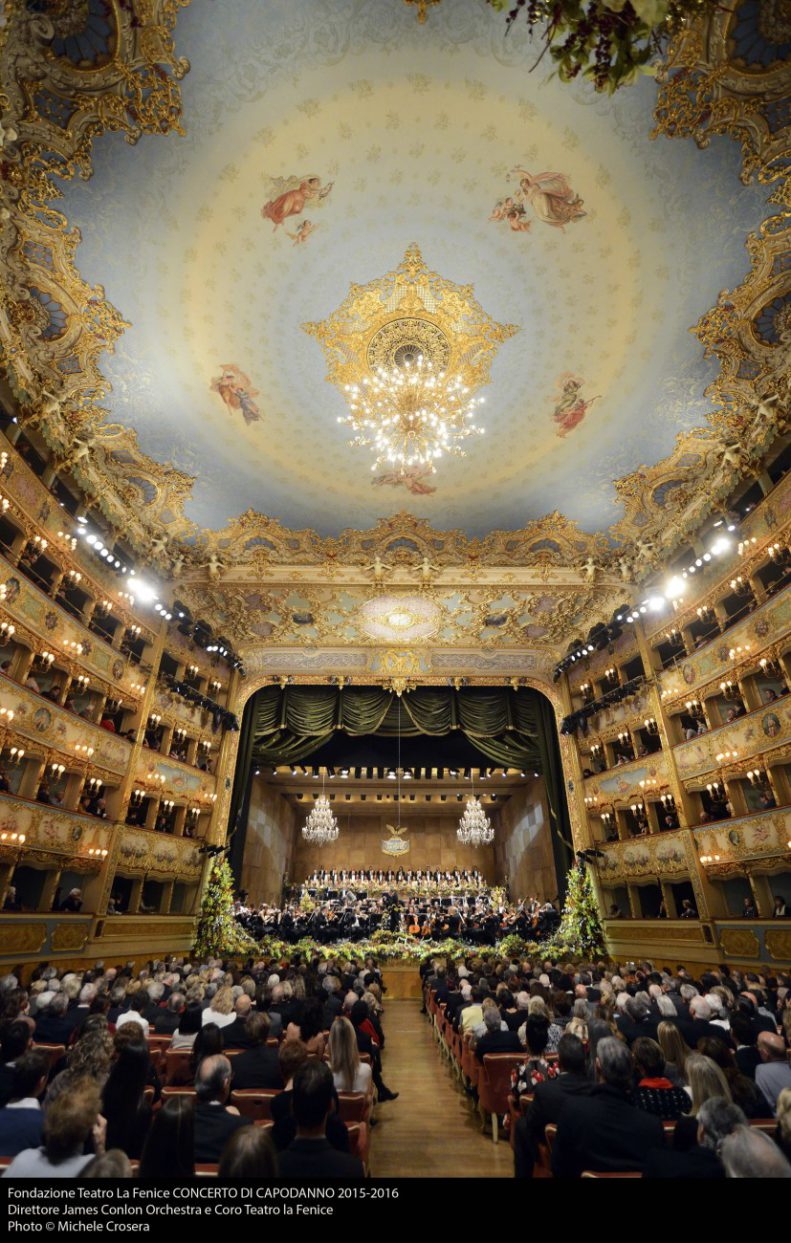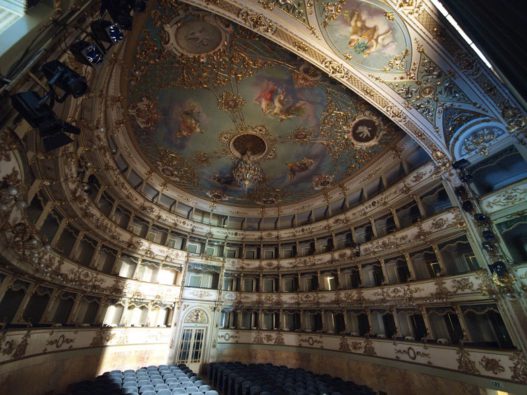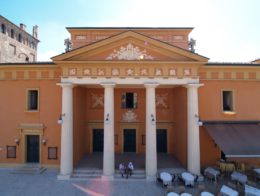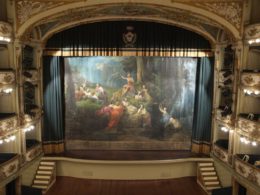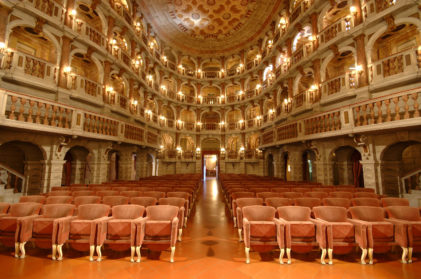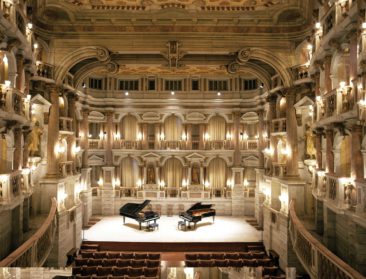Historical theatre in Italy, 4 places of worship, tainted with Italian colours
READ ME IN  Italiano
Italiano
«The Historical Theatre dates back to ancient Rome and is based on the deep relationship between the actor and the spectator.»
Throughout its history, the Historical Theatre in Italy took its inspiration from the Greek theater and followed with modern and contemporary theatre.
«A THEATRE IS A TEMPLE, A TEMPLE WHERE THE SUN NEVER SHINES. YOU ALWAYS WORK WITH LITTLE LIGHT, IN ABSOLUTE SILENCE; THE SCRIPT MUST BE RESPECTED IN ITS EVERY COMMA, IT MUST BE DEEPENED, BECAUSE EVERYTHING IS IN THE WORD»
Marcello Mastroianni
Teatro Olimpico – Vicenza
Let us begin by discovering a truly charming historical theatre, namely the Teatro Olimpico in Vicenza, located in the Palazzo del Territorio. The project design was at the hands of architect Andrea Palladio who designed the project in 1580, but he passed away a few months after, without seeing its realization. Inspired by the Roman theatres as described by Vitruvio, it was Silla, son of Andrea Palladio, who curated its execution in 1583, as ordered by the Olympic Academy.
The first performance, on the occasion of the Carnival of 1585, was Sophocles’ Oedipus King. With regards to the scenery, thanks to the five openings of the proscenium, the seven streets of Thebes were reproduced, creating a refined perspective game designed by Vincenzo Scamozzi, Palladio’s spiritual heir.
La Fenice Theatre – Venice
The second historical theatre we will talk about in this collection is The Teatro La Fenice in Venice. Founded in 1792, it was the seat of numerous absolute premieres in the 19th century, as in the case of Rossini, Bellini, Donizetti and Verdi. With a capacity of 1000 seats, excellent acoustics, an orchestra and a choir composed of 98 and 66 elements, La Fenice is still today a production center of primary importance, with more than 100 opera performances per year, an important symphonic season entrusted to directors of international caliber and ballet performances and chamber music concerts.
Of particular importance is the activity of the Foundation, also linked to the training of new artistic endeavors and the promotion of young emerging talent. The Foundation, in fact, in addition to the assignment of some leading productions to emerging young professionals, has commissioned symphonic pieces and chamber opera productions to young composers. Furthermore, this splendid historical theatre takes pride in the collaboration with the main Venetian educational institutions (Conservatory, University, Academy of Fine Arts), in the setting up of shows that involve students in their production and design, in particular within the Atelier della Fenice at the Teatro Malibran, founded very recently.
Municipal Theatre – Carpi
Let’s continue our journey of the Historical Theatre with the Teatro Comunale di Carpi, one of the most important theatres of Emilia-Romagna and of Italy as a whole. Inaugurated in the aftermath of the proclamation of the Kingdom of Italy (11 August 1861), the works began in 1857 and ended four years later, coinciding with the release of Giuseppe Verdi’s Il Rigoletto. Located between Palazzo dei Pio and Palazzo Scacchetti, seat of the Municipality of Carpi for more than a century, it overlooks the gigantic Piazza dei Martiri, heir to the Teatro Vecchio designed in 1639 by the ducal architect and set designer Gaspare Vigarani.
This Historical Theatre, from its foundation until today, has always been managed directly by the Municipality and has hosted on its stage international actors of prose, established opera singers, prestigious orchestras and musicians and dance companies of high profile both at the national and international level. Since 2004, in addition to the constant planning of matinee shows aimed at young people from lower and upper schools, there is a theatrical workshop called ” Fare Teatro “, which gives teenagers and young people the opportunity to learn the main theatrical techniques and perform in numerous events.
Bibiena Scientific Theatre – Mantova
We conclude with the last Historical Theater, namely the Bibiena Scientific Theatre of Mantua, built between 1767 and 1769, designed by Antonio Galli Bibiena under the commission of Count Carlo Ottavio di Colloredo. Shortly after its inauguration, an Amadeus Mozart, little more than 14, who arrived in Mantua for his theatrical tour, held his concert together with his father Leopold; the theatre is inserted in the complex of the Academic Palace, its bell-shaped structure is typical of that particular historical period.
At the beginning the function of this Historical Theatre was to host scientific meetings, but also performances and concerts; thanks to its splendid façade, realized by Giuseppe Piermarini, the theatre is still used today for musical events and conferences.
Argia Renda
READ ME IN  Italiano
Italiano


